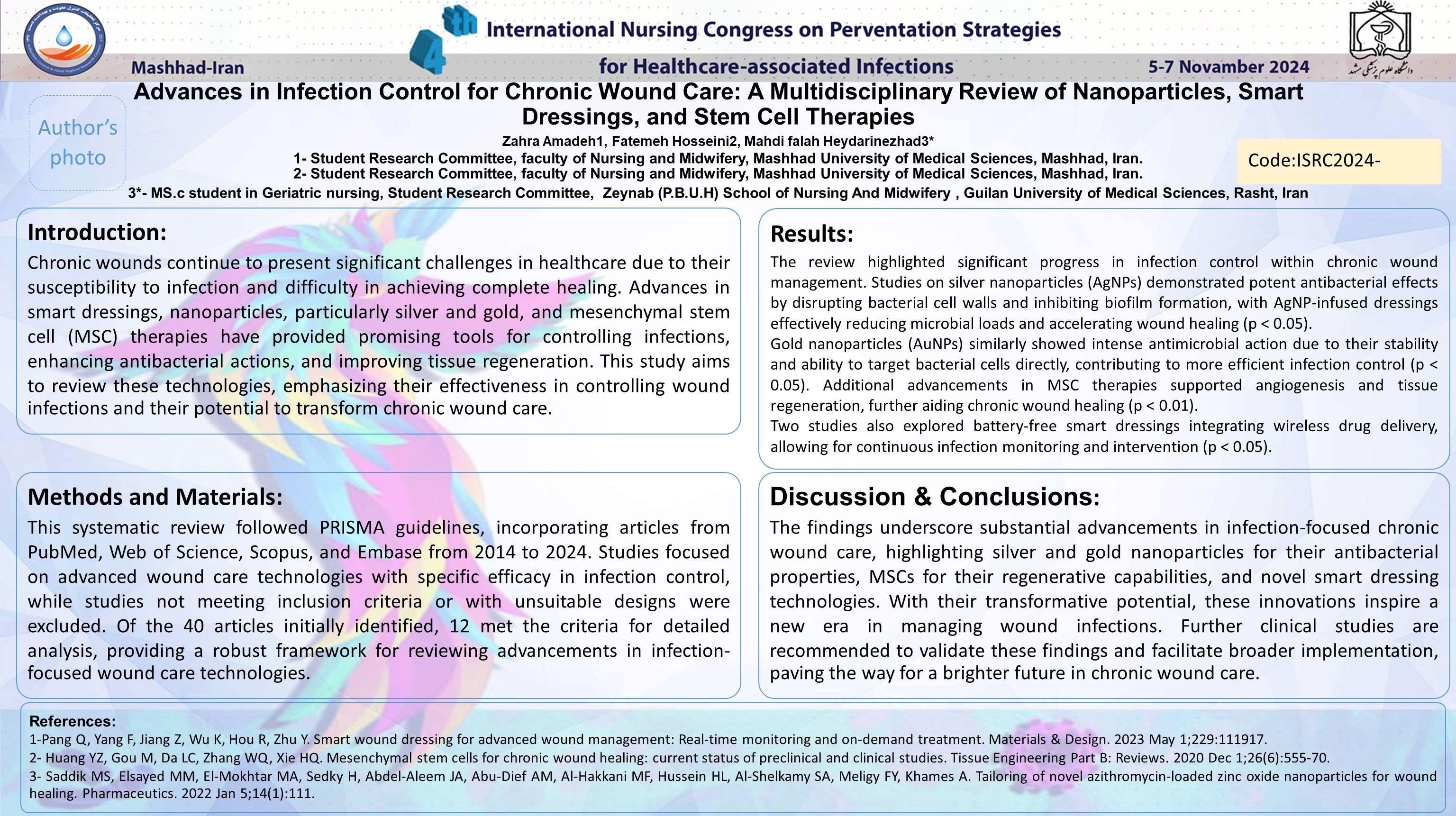پیشرفت در کنترل عفونت برای مراقبت از زخم مزمن: بررسی چند رشته ای نانوذرات، پانسمان های هوشمند و درمان های سلول های بنیادی
کد: G-1225
نویسندگان: زهرا آماده ℗, مهدی فلاح حیدری نژاد ©, فاطمه حسینی
زمان بندی: زمان بندی نشده!
دانلود: دانلود پوستر
خلاصه مقاله:
خلاصه مقاله
Abstract Background and Objectives: Chronic wounds continue to present significant challenges in healthcare due to their susceptibility to infection and difficulty in achieving complete healing. Advances in smart dressings, nanoparticles, particularly silver and gold, and mesenchymal stem cell (MSC) therapies have provided promising tools for controlling infections, enhancing antibacterial actions, and improving tissue regeneration. This study aims to review these technologies, emphasizing their effectiveness in controlling wound infections and their potential to transform chronic wound care. Methods: This systematic review followed PRISMA guidelines, incorporating articles from PubMed, Web of Science, Scopus, and Embase from 2014 to 2024. Studies focused on advanced wound care technologies with specific efficacy in infection control, while studies not meeting inclusion criteria or with unsuitable designs were excluded. Of the 40 articles initially identified, 12 met the criteria for detailed analysis, providing a robust framework for reviewing advancements in infection-focused wound care technologies. Results: The review highlighted significant progress in infection control within chronic wound management. Studies on silver nanoparticles (AgNPs) demonstrated potent antibacterial effects by disrupting bacterial cell walls and inhibiting biofilm formation, with AgNP-infused dressings effectively reducing microbial loads and accelerating wound healing (p 0.05). Gold nanoparticles (AuNPs) similarly showed intense antimicrobial action due to their stability and ability to target bacterial cells directly, contributing to more efficient infection control (p 0.05). Additional advancements in MSC therapies supported angiogenesis and tissue regeneration, further aiding chronic wound healing (p 0.01). Two studies also explored battery-free smart dressings integrating wireless drug delivery, allowing for continuous infection monitoring and intervention (p 0.05). Conclusion: The findings underscore substantial advancements in infection-focused chronic wound care, highlighting silver and gold nanoparticles for their antibacterial properties, MSCs for their regenerative capabilities, and novel smart dressing technologies. With their transformative potential, these innovations inspire a new era in managing wound infections. Further clinical studies are recommended to validate these findings and facilitate broader implementation, paving the way for a brighter future in chronic wound care.
کلمات کلیدی
Infection Control, Nanoparticles, Stem Cells, Chronic Wounds
